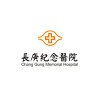
Integrated Microfluidic Systems for Diagnosis of Periprosthetic Joint Infection
Prosthetic Joint InfectionDiagnosing periprosthetic joint infection (PJI) remains a major clinical challenge. The diagnosis of PJI is based on a composition of clinical judgment, serologic test from peripheral blood, synovial fluid cytology and biomarkers, radiography, microbiology, histopathologic evaluation of periprosthetic tissue, and intraoperative findings. The importance of PJI diagnosis give the subsequent treatment options, like the removal of prosthesis, debridement and prosthesis retention and the time of reimplantation. Currently, The Second International Consensus Meeting (ICM) has announced its criteria for the diagnosis of PJI. The preoperative diagnosis includes serologic tests (C-reactive protein, D-dimer, and erythrocyte sedimentation rate) and synovial fluid biomarkers (white blood cell and differential, leukocyte esterase and ⍺-defensin). The intraoperative diagnosis includes a single positive culture, positive histology, and positive intraoperative purulence. However, some of the markers used in the 2018 ICM criteria, such as ⍺-defensin, leukocyte esterase, and synovial fluid C-reactive protein, are not available in every hospital and cannot be immediately available to clinicians in decision making. The microfluidic technologies have made a notable impact on the evolution of diagnostic tools by providing a rapid and cost-effective platform for the application of immunoassay techniques. The microfluidic system integrates the complex processing steps of the laboratory protocols into a single chip through logical integration and optimization of processes. Chang Gung Memorial Hospital and National Tsing Hua University have conducted preliminary research to confirm the feasibility of their microfluidic systems. Therefore, the project will develop a "microfluidic biomarker detection chip" to detect the concentrations three important biomarkers for PJI, including ⍺-defensin, leukocyte esterase and C-reactive protein in synovial fluids. This will be a three-year project. In the 1st year, 50 patients who will be scheduled to undergo unilateral revision total joint arthroplasty (RTJA) will be collected with the synovial fluid and tested on a laboratory platform. In the 2nd year, based on laboratory results, 50 patients undergoing RTJAs will be recruited to develop a microfluidic chip system, and their on-chip performance will be fine-tuned and optimized. In the 3rd year, 50 patients undergoing RTJA will be collected, and the verification of the microfluidic system will be realized. This system will be validated in PJIs cohorts in the first stage of debridement and implant removal, in the interim period, and the second stage of reimplantation. It is expected that biomarker detection chip will improve medical distress and bring important information to clinical decision-making.

Dynamics of Markers of Infection and Inflammation in Hospitalized Coronavirus Disease 2019 (COVID-19)...
COVID-19 Respiratory InfectionPatients requiring admission to the hospital due to a moderate and severe COVID-19 infection may differ in their ability to respond to viral infection and to eliminate viral load. Several comorbidities and interventions like antivirotic or antiinflammatory treatment may also modify expected patients response and decrease of viral load. In this observational study, evolution of selected inflammatory markers, indicators of severity of infection and patient characteristics will be followed and recorded in hospitalized patients with COVID-19.

Evaluating Antibiotic Stewardship Assisted by Computer in the University Hospital of Nancy (MACABAO)...
AntibioticHealthcare Associated InfectionAntibiotic resistance is one of the most pressing health threats that mankind faces now and in the coming decades. Antibiotic resistance leads to longer hospital stays, higher medical costs and increased mortality. In order to tackle antibiotic resistance, a computerized-decision support system (CDSS) facilitating antibiotic stewardship and an electronic surveillance software (ESS) facilitating infection prevention and control activities will implement in our tertiary care university hospital. The investigators conduct a pragmatic, prospective, single-centre, before-after uncontrolled study with an interrupted time-series analysis 12 months before and 12 months after the introduction of the CDSS for antibiotic stewardship (APSS) and ESS for infection surveillance (ZINC). APSS and ZINC will assist respectively the antibiotic stewardship and the infection prevention and control teams of Nancy University Hospital (France). The investigators will evaluate the impact of the CDSS/ESS on the antibiotic use in adult (≥ 18 years) inpatients (hospitalised ≥ 48h). The primary outcome is the prescription rate by all healthcare professionals from the hospital of all systemic antibiotics expressed in defined daily doses/1 000 patients/month. Concurrently, the investigators will assess the safety of the intervention, its impact on the appropriateness of antibiotic prescriptions and on additional precautions (isolation precautions) as recommended in guidelines, and on bacterial epidemiology (multidrug-resistant bacteria and Clostridioides difficile infections) in the hospital. Finally, the investigators will evaluate the users' satisfaction and the cost of this intervention from the hospital perspective.

Cheetah - Sterile Glove and Clean Instrument Change at the Time of Wound Closure to Reduce Surgical...
Surgical Site InfectionTo assess whether the practice of using separate sterile gloves and instruments to close wounds at the end of surgery compared to current routine hospital practice can reduce surgical site infection

Vascular No-React Graft Against Infection
Vascular InfectionsThis study seeks to demonstrate the effectiveness and safety of the Non-valved Conduit for CE marking on the basis of infection. The rationale for infection resistance with the conduit is that BioIntegral Surgical No-React® treated products have a well-documented history of infection resistance in hybrid vascular settings.

Sofosbuvir/Velpatasvir/Voxilaprevir (SOF/VEL/VOX) for Patients With Hepatitis C Virus Infection...
Hepatitis C Virus InfectionTreatment Side Effects3 moreThe investigators aim to assess the effectiveness and safety of sofosbuvir/velpatasvir/voxilaprevir (SOF/VEL/VOX) for 12 weeks in hepatitis C virus (HCV)-infected patients who fail to prior NS5A-containing DAA regimens and HCV genotype 1a and 3 patients who fail to prior non-NS5A-containing DAA regimen in Taiwan on a basis of a multicenter observational study.

A Prospective Registry For Non Tuberculous Mycobacterial (NTM) Infections
Mycobacterium InfectionsNontuberculousThe study aims to address the following aims To provide an overview of the epidemiology of the patients who are managed in the Singapore General Hospital for NTM infections. To evaluate the medical care of patients in the institution with regards to the type of medical and/or surgical treatment received and specifically, the antibiotic regime and duration administered. A longitudinal follow up which will allow an assessment of our care and patient outcome in this population cohort

Fungal Infection on a Joint Prosthesis
Fongal InfectionIt is generally accepted that the fungal infection on a joint prosthesis is to be treated in two surgical time: implant removal and prosthetic reconstruction. The service took the option for over 10 years to treat bacterial infections in joint replacement by a change in time. In four recent cases the diagnosis initially suspected of bacterial infection has been restated on intraoperative bacteriological examinations fungal infection. It is therefore a potentially harmful side effect of the chosen treatment option, but 4 patients in question were all cured of their fungal infection after a postoperative antifungal therapy. The objective of this study is to report these cases for discussion on the therapeutic choices in fungal infections on joint replacement.

Clinical Significance and Optimal Treatment of Community-onset Urinary Tract Infections Caused by...
Urinary Tract InfectionsThe purposes of this study are: To estimate the prevalence of extended spectrum β-lactamase (ESBL) and/or AmpC among Enterobacteriaceae which cause community-onset urinary tract infections (UTIs) To collect the background, risk factors and clinical outcome of patients with community-acquired uropathogenic condition related to Enterobacteriaceae (both ESBL, AmpC- and non ESBL and/or AmpC producing) after receive different antibiotic regimens. To develop a scoring system to early identify patients at risk of being infected with ESBL- and/or AmpC-producing Enterobacteriaceae by comparing the risk factors for community-onset UTIs caused by ESBL- and/or AmpC-positive against non ESBL -and/or AmpC Enterobacteriaceae To demonstrate the efficacy and safety of ertapenem for the empiric treatment of community-onset UTIs in patients at risk for ESBL- and/or AmpC-producing organism. The study hypothesis (i) Patients infected with community-acquired uropathogenic ESBL- and/or AmpC-producing Enterobacteriaceae who receive regimens other than carbapenems have a worse outcome. (ii) There are certain risk factors predicting the acquisition of community-onset UTIs caused by ESBL- and/or AmpC-producing Enterobacteriaceae. (iii) The use of ertapenem is an effective and safe empirical therapy compared with other agents for community-onset UTIs caused by ESBL- and/or AmpC-producing Enterobacteriaceae.

Investigation of Clinical Relevance of β-D-Glucan Tests in Patients With Invasive Fungal Infection...
Fungal InfectionInvasive fungal infection (IFI) is a disease usually occurred in the patients with compromised immune condition, such as acute leukemia, allogeneic stem cell transplantation or long term immune suppression treatment with the incidence increasing over last decades. Given the introduction of numerous anti-fungal agents and great advance has been made in recent years, IFI is still a dangerous disease with high mortality. Early diagnosis of IFI is still a problem challenging the physicians. Serum tests of β-D-Glucan are introduced to the diagnosis of IFI, which have the advantage of easy application. However, the value of this test in the monitoring of antifungal treatment remains unclear. The investigators perform this study to evaluate the correlation of the serum test results of β-D-Glucan test with the treatment response during the anti-fungal treatment, and hope to see that the results of serial serum tests are good predictive markers for treatment response.
